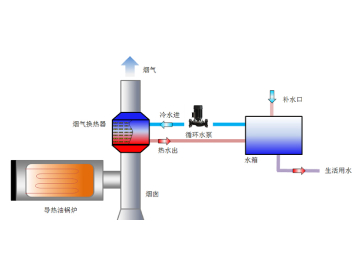Steam condensate recovery is the process of collecting the liquid condensate formed when steam transfers heat to equipment or processes, then returning that hot water—often at saturation temperature—back to the boiler’s feed system or reusing it for pre-heating and flash steam generation. Instead of discarding condensate to drain, a recovery system employs steam traps, flash vessels, and condensate pumps to capture this resource, conserving both the water and its remaining sensible heat.
Why Recover Condensate?
-
Fuel Savings: Boiler feedwater at 180–200 °F requires far less energy to convert back to steam, cutting fuel needs by 10–20%.
-
Water Treatment & Make-Up: Reusing condensate reduces fresh water intake and chemical treatment costs by up to 80%.
-
Environmental Impact: Less fuel burned means fewer greenhouse gases and pollutants, while capturing steam clouds improves workplace safety and comfort.
-
Reliability: With proper piping and controls, recovery systems can maintain process continuity even during individual trap or pump maintenance.
Industrial‐scale steam condensate recovery captures and reuses the hot condensate produced when steam gives up its latent heat, returning both water and energy back to the boiler feed or process loops. By doing so, plants can reduce boiler fuel consumption by up to 20%, cut make-up water and treatment costs by as much as 80%, and lower CO₂, NOₓ and SOₓ emissions—all while improving system reliability and uptime.
Industries That Utilize Steam Condensate Recovery
Chemical & Petrochemical
Plants in this sector generate large volumes of condensate from reactors, heat exchangers, and stripping columns. Recovering it reduces hazardous wastewater discharge and cuts high-pressure steam make-up requirements.
Pharmaceutical & Formulation
Sterilization, clean-in-place (CIP), and reactor heating demand pure, high-quality condensate. Recovery systems help maintain stringent water quality and lower energy bills in pharma manufacturing.
Food & Beverage Processing
Operations such as pasteurization, cooking, and sterilization rely on steam. Condensate recovery in dairies, canneries, and beverage plants saves water for cleaning and reduces boiler cycling during batch runs.
Breweries & Distilleries
Brewing processes require intermittent steam for mashing, lautering, and sterilization. Modular recovery units capture condensate between brew cycles, boosting efficiency in craft and large-scale breweries alike.
Textile & Apparel
Dyeing, finishing, and ironing use high-temperature steam. Textile mills recover condensate to pre-heat process water, stabilizing dye baths and cutting operating costs.
Pulp & Paper
Steam drives drying drums and chemical digesters. Flashing high-pressure condensate to low pressure supplies supplemental steam for drying, while the remaining hot water returns to the recovery loop.
Power Generation & Cogeneration
Condensate from turbine exhaust is typically at low temperature but still contains significant enthalpy. Recovery into the feedwater train improves boiler thermal efficiency and supports combined‐heat‐and‐power operations.
District Heating, Hospitals & Campuses
Large campuses and hospitals with central boiler plants capture condensate from radiators and sterilizers, maintaining reliable hot-water service and reducing makeup water demand during peak usage.
Automotive Manufacturing
Steam is used for rubber vulcanization, paint baking, and carbon-fiber curing. Condensate recovery helps automotive plants meet tight load-following requirements while cutting energy costs.
Oil & Gas Refineries
Process heaters and fractionation columns generate condensate at various pressures. Recycling it minimizes cooling-tower blowdown and supports high-pressure steam loops in refining operations.
Rubber & Plastic Processing
Injection molding and vulcanization rely on precise steam control. Condensate recovery stabilizes temperature and pressure, reducing cycle times and waste.
Meat Processing & Tanning
Steam is essential for cooking, sterilization, and hide treatment. Condensate systems cut water usage and ensure consistent steam supply in meat plants and tanneries.
Laundries & Hotels
Commercial laundries and hotels use steam for washing and heating. Condensate return lines feed boiler feedwater tanks, lowering water and fuel costs in hospitality and textile services.
Cement & Construction Materials
Steam drives curing and drying processes in cement and gypsum board production. Recovering condensate preserves process heat and reduces fresh-water handling in heavy-industry plants
Get your best price
Quickly compare 3 FREE quotes
- Engineer quick quote
- The overall delivery speed is fast
- Financial choice
- Low installation costs and cost savings
25 years+ of boiler R&D
More than 20 innovative technologies



